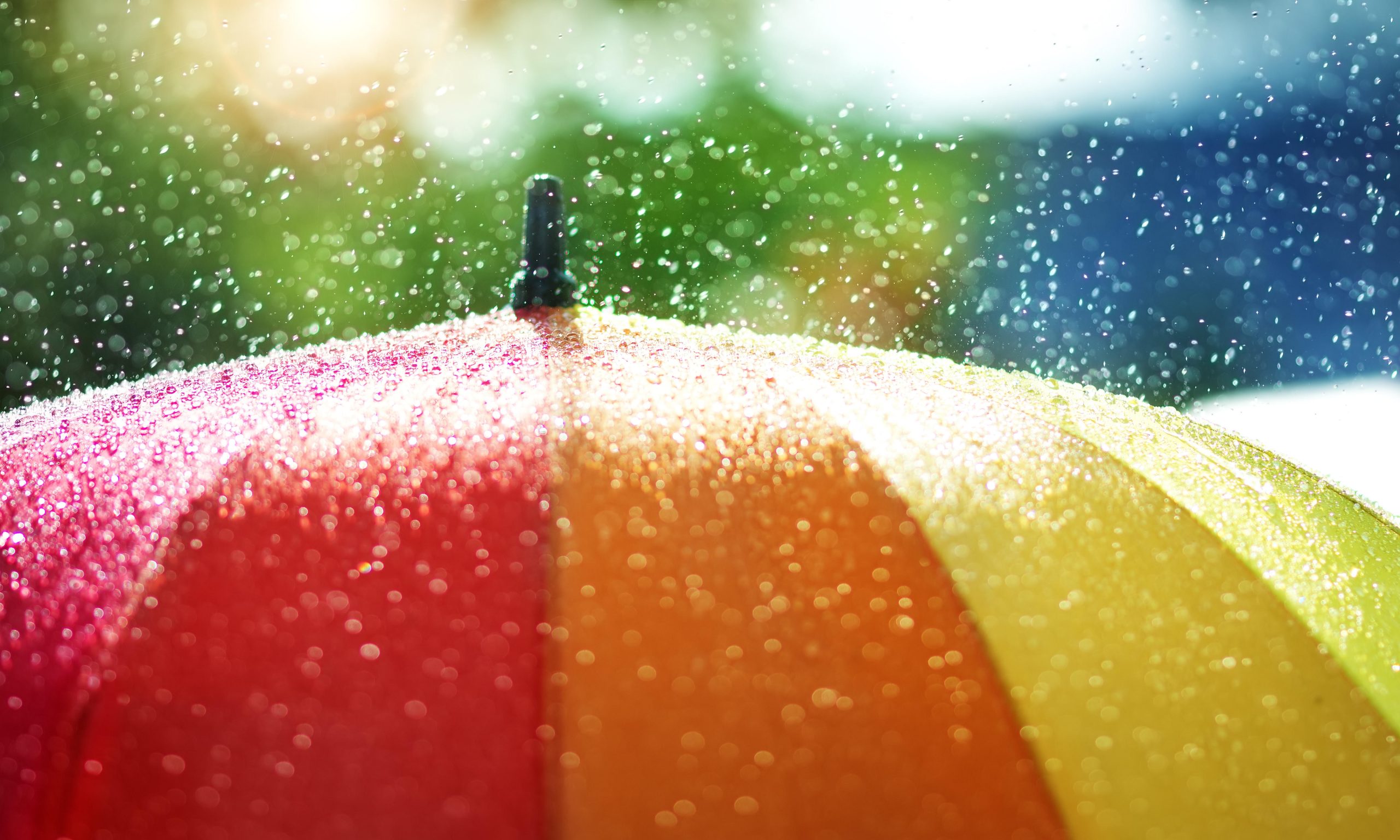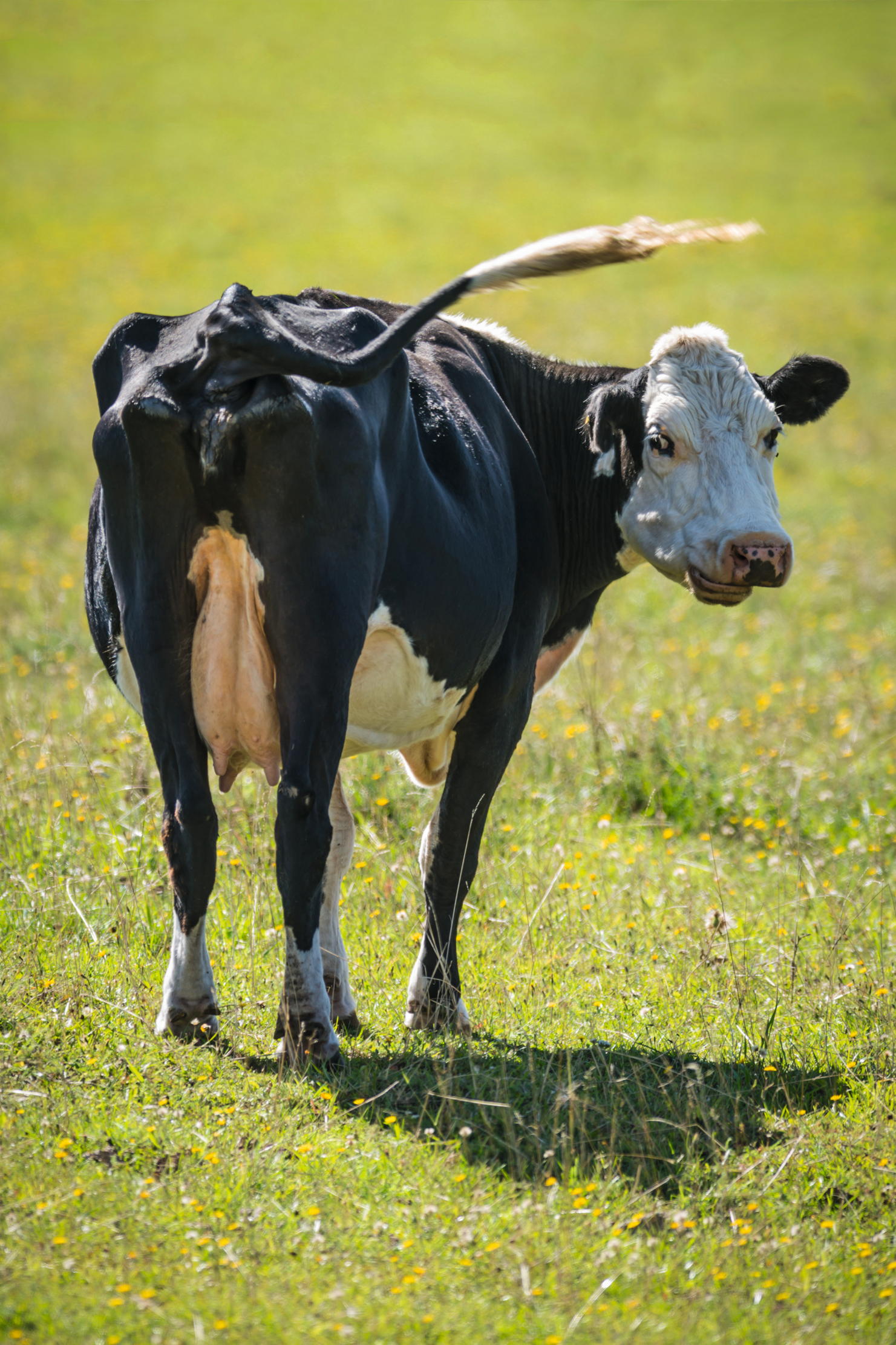Curious Questions: How do weather forecasters figure out a percentage chance of rain?
Those 'chance of rain' percentages you see on the weather forecast hide a bewildering range of possibilities. So how are they calculated? The answer is far from simple, much less logical, as Martin Fone discovers.


I like to think I have embraced new technology. I have a smartphone, use social media moderately, and have even been known to download the odd app or two. Undoubtedly, they display a high degree of ingenuity, but I find that the novelty soon wears off. After all, there are only so many times you want to know the type and destination of an aircraft flying overhead (once), what is the recommended garnish for a certain gin (occasionally) or how to travel from A to B by public transport (sadly, never now). To avoid app-overload, every three months I cull my phone of those which once tickled my fancy, but now lie neglected. It is quite therapeutic.
One app, though, that has, so far, always managed to escape my purges is one that purports to tell me what the weather is going to be like. Initially, I had been sceptical. For decades I had been content with the evidence of my own eyes, my sense of what the clouds and wind direction are telling me or, if I ever felt the need for some additional assistance, my poor man’s weather glass, a frond of sugar kelp.
However, you cannot stand in the way of progress and the weather app did seem to promise a degree of meteorological rigour to its prognostications which would be folly to ignore. So, I downloaded it and my experience has been positive. It is broadly accurate, but it does seem to give off a sense of spurious accuracy, especially when it comes to rain.
Simple soul that I am, I have always considered rain to be a binary event; it rains, or it is fine. However, my app will insist on showing me an icon of three raindrops with a percentage underneath. Sometimes I will see a relatively low percentage, perhaps 20, and on other occasions a much larger figure, such as the 98 per cent it is showing as I write this. Looking out of the window, it is raining, but the app rarely seems to be bold enough to assert that it will rain, come hell or high water. What does it all mean?
"The prize for the most expressive phrase that leaves nothing to the imagination is the French ‘il pleut comme vache qui pisse’"
Rain is not uniform in its force, quantity, or duration, the spectrum ranging from a light dampness in the air to something of such force, intensity, and duration that it endangers life and property. Over the centuries we have developed a range of words and phrases the different types of rain we experience. There is ‘mizzle’ and ‘drizzle’ while the Scots call a day with that damp, misty feel ‘dreich’, and the Irish talk of ‘soft weather’. Those of a more poetic disposition might use ‘smirr’ to describe that fine, misty rain that surprises us with its ability to make us feel wet. In Somerset ‘letty’ is used to describe a shower that has just enough intensity to justify the abandonment of outdoor work.
When the intensity and duration of the shower increases, we might talk of it ‘tippling’ or ‘pelting’, ‘luttering’ or ‘siling’ down. In parts of the Midlands and North East you might hear ‘plothering’ deployed to recreate onomatopoeically the sound of raindrops pounding the ground. One of my favourites is ‘cow-quaker’, used to describe a sudden and intense May downpour that causes cattle, recently liberated from their winter quarters, to ponder whether the outdoor life is all that it is made out to be.
Even heavier bursts of rain may lead us to explain that it is ‘raining cats and dogs’, a phrase that has long bemused me. Its etymology is far from certain. Some claim it is a corruption of the Greek kata doxa, meaning ‘contrary to belief or expectation’ and suggestive that the rain may be heavier than usually experienced. Others point out that the Norse god, Odin, was associated with the wind and his symbol was a dog whilst witches were renowned for travelling around in the rain on their broomsticks, accompanied by a cat. Some, though, suggest that it may be a corruption of the Old English word catadupe, which meant a waterfall.
Sign up for the Country Life Newsletter
Exquisite houses, the beauty of Nature, and how to get the most from your life, straight to your inbox.
When the rain is intense and vertical, we might be inclined to describe it as ‘raining stair rods’, another odd phrase when you ponder it. Stair rods as a means of fastening down carpet to the stairs have long fallen out of fashion and, in any event, to be effective they had to be horizontal. However, it is probably no stranger than the French idiom, ‘il pleut des cordes’, ‘it is raining rope’.
"The Hawaiians have over two hundred terms for rain and over 600 for wind. They clearly take their weather seriously."
Not to be outdone, the Welsh talk of ‘mae hi’n bwrw hen wragedd a ffyn’ which translated literally means ‘it’s raining old ladies and sticks’. Surely, though, the prize for the most expressive phrase that leaves nothing to the imagination is the French ‘il pleut comme vache qui pisse’. We have, though, a long way to go to surpass the Hawaiians who have over two hundred words and terms to describe rain to go along with over 600 expressions they have for wind. They clearly take their weather seriously.
Disappointingly, the percentage displayed on my app is not an attempt to define the intensity of an outburst of rain, helping me to differentiate between mizzle and plothering. Instead it is a calculation of the probability of precipitation involving two factors, both of which are estimates. The first is the meteorologist’s confidence on a scale of nought (no) to 1 (definitely) that at least 0.1 of a millimetre of rain will fall in the time period. The second factor is an estimate of the percentage of the area in question that will experience measurable rain, again on a scale of 0 (nowhere) to 1 (everywhere). The percentage displayed on the app is the product of the two.
If there is a 100 per cent chance of rain, but only over 60% of the area, then the percentage displayed on the app will be 60%. Confusingly, a 75% chance of rain covering eighty per cent of the area will also produce the same result. Clearly, the app should display both elements of the calculation, but life and technology are never that simple. And how do you know whether you are going to be in that part of the area where any measurable rain is going to fall?
Somewhat counter-intuitively, the percentage displayed against a particular time on the hourly forecast relates to the probability of rain in the previous sixty minutes. As Nikki Berry from the MeteoGroup helpfully explained, if you put a ‘measuring jug out in your garden at 13:00, and you go out and check it at 14:00, the 40% chance of rain is the chance of you having some rain in your jug at 14:00’. In other words, if you want to know how likely it is to rain now, look at the forecast for an hour hence.
It appears I have never really understood what the app is telling me and now I do, I wonder whether I really need it. I can see it falling victim to my next purge.

Curious Questions: Why do Australians call the British 'Poms'?
With England about to take on Australia in The Ashes, Martin Fone ponders the derivation of the Aussies nickname for

Credit: Getty
Curious Questions: How did Abraham Lincoln come to be the only US president to hold a patent?
Statesman, lawyer, fearless leader – and part-time inventor. Martin Fone looks at one of Abraham Lincoln's lesser-known talents.

Curious Questions: How likely are you to be killed by a falling coconut?
Our resident curious questioner Martin Fone poses (and answers) another head scratcher - or should we say, head banger?

Curious Questions: Why does Scotland have 30,000 lochs, but only one lake?
A moment's reflection on a cancelled pub quiz gets Martin Fone wondering about Scotland's only lake.
After graduating in Classics from Trinity College Cambridge and a 38 year career in the financial services sector in the City of London, Martin Fone started blogging and writing on a freelance basis as he slipped into retirement. He has developed a fearless passion for investigating the quirks and oddities of life and discovering the answers to questions most of us never even think to ask. A voracious reader, a keen but distinctly amateur gardener, and a gin enthusiast, Martin lives with his wife in Surrey. He has written five books, the latest of which is More Curious Questions.
-
 'Monolithic, multi-layered and quite, quite magnificent. This was love at first bite': Tom Parker Bowles on his lifelong love affair with lasagne
'Monolithic, multi-layered and quite, quite magnificent. This was love at first bite': Tom Parker Bowles on his lifelong love affair with lasagneAn upwardly mobile spaghetti Bolognese, lasagne al forno, with oozing béchamel and layered meaty magnificence, is a bona fide comfort classic, declares Tom Parker Bowles.
By Tom Parker Bowles
-
 Country houses, cream teas and Baywatch: Country Life Quiz of the Day, April 24, 2025
Country houses, cream teas and Baywatch: Country Life Quiz of the Day, April 24, 2025Thursday's Quiz of the Day asks exactly how popular Baywatch became.
By Toby Keel
-
 Curious Questions: Will the real Welsh daffodil please stand up
Curious Questions: Will the real Welsh daffodil please stand upFor generations, patriotic Welshmen and women have pinned a daffodil to their lapels to celebrate St David’s Day, says David Jones, but most are unaware that there is a separate species unique to the country.
By Country Life
-
 Nobody has ever been able to figure out just how long Britain's coastline is. Here's why.
Nobody has ever been able to figure out just how long Britain's coastline is. Here's why.Welcome to the Coastline Paradox, where trying to find an accurate answer is more of a hindrance than a help.
By Martin Fone
-
 Curious questions: how an underground pond from the last Ice Age almost stopped the Blackwall Tunnel from being built
Curious questions: how an underground pond from the last Ice Age almost stopped the Blackwall Tunnel from being builtYou might think a pond is just a pond. You would be incorrect. Martin Fone tells us the fascinating story of pingo and dew ponds.
By Martin Fone
-
 Curious Questions: What's in a (scientific) name? From Parastratiosphecomyia stratiosphecomyioides to Myxococcus llanfair pwll gwyn gyll go gery chwyrn drobwll llan tysilio gogo goch ensis, and everything in between
Curious Questions: What's in a (scientific) name? From Parastratiosphecomyia stratiosphecomyioides to Myxococcus llanfair pwll gwyn gyll go gery chwyrn drobwll llan tysilio gogo goch ensis, and everything in betweenScientific names are baffling to the layman, but carry all sorts of meanings to those who coin each new term. Martin Fone explains.
By Martin Fone
-
 Curious Questions: How did a scrotum joke confuse paleontologists for generations?
Curious Questions: How did a scrotum joke confuse paleontologists for generations?One of the earliest depictions of a fossil prompted a joke — or perhaps a misunderstanding — which coloured the view of dinosaur fossils for years. Martin Fone tells the tale of 'scrotum humanum'.
By Martin Fone
-
 Curious Questions: Why do so many animals have bright white bottoms?
Curious Questions: Why do so many animals have bright white bottoms?Why do so many animals have such obviously flashy appendages, asks Laura Parker, as she examines scuts, rumps and rears.
By Laura Parker
-
 The 1930s eco-warrior who inspired David Attenborough and The Queen, only to be unmasked as a hoaxer and 'pretendian' — but his message still rings true
The 1930s eco-warrior who inspired David Attenborough and The Queen, only to be unmasked as a hoaxer and 'pretendian' — but his message still rings trueMartin Fone tells the astonishing story of Grey Owl, who became a household name in the 1930s with his pioneering calls to action to save the environment — using a false identity to do so.
By Martin Fone
-
 Curious Questions: Why do all of Britain's dolphins and whales belong to the King?
Curious Questions: Why do all of Britain's dolphins and whales belong to the King?More species of whale, dolphin and porpoise can be spotted in the UK than anywhere else in northern Europe and all of them, technically, belong to the Monarch. Ben Lerwill takes a look at one of our more obscure laws and why the animals have such an important role to play in the fight against climate change.
By Ben Lerwill